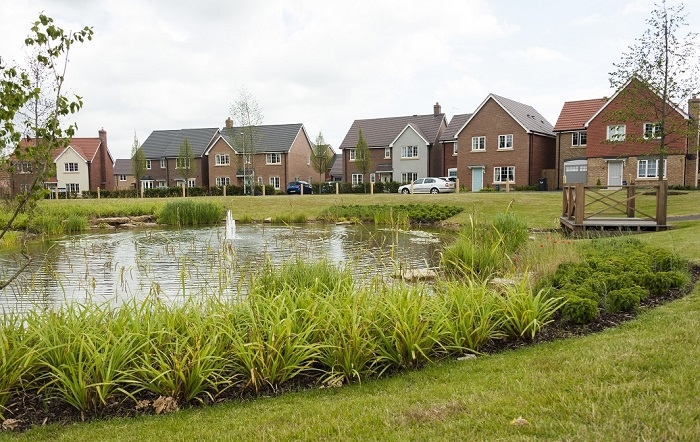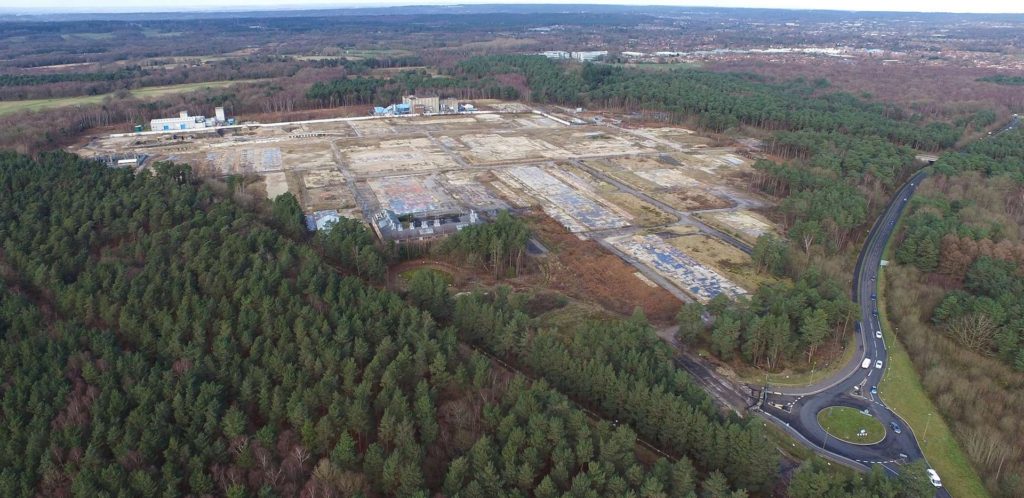
Protect our green fields
In a sign that much of the South East of England is starting to revolt against the Government’s plans to concrete over our green fields, the Sunday Times has published an important article attacking “meaningless” garden villages and urban sprawl. This echoes the recent survey of Hampshire residents that put protecting our towns and villages as a key election issue. Just to be clear, We Heart Hart does not support the Rudlin proposal outlined in the article below of taking bites out of our green belt. We believe that Hart District’s housing need can be met from brownfield development.
It remains to be seen if our Parliamentary and District Council candidates will take heed. If you want to join 1,600 other people who want to oppose Hart District Council’s plans for a new town in Hart, please sign and share our petition.
Go to Petition
The article can be found here and is reproduced below.
Beware the ‘garden village’: it’s not green and it’s not a village
by Charles Clover, Sunday Times
OUR nearby town has just leapt towards us. It vaulted the trunk road, previously a barrier to development, with a huge park-and-ride for 1,000 cars. The lights of that were turned on this month, just after a proposal for a new “garden village” of 4,000 homes emerged from the imagination of local speculators. Were this approved, it would push far north into green countryside and towards Constable country.
Our nearby town is Colchester but it might be anywhere in the southeast. The quandary is the same: how to provide enough land to build about 1,000 homes a year for the next 15 years to address the desperate need to house the young and to tackle rising house prices.
The town is under pressure to find the right number of homes to put in its local plan or it will lose control and be forced to approve every speculative proposal, as has happened in another local town, Braintree, when an inspector found its numbers too low. So a rather chilling thing has happened. Colchester issued a “call for sites”. This flushed out not only every farmer with a few acres he wouldn’t mind selling — the little red patches on the map of offered land in every village are a tale of rampant opportunism. The call has also galvanised some large landowners to band together and propose “garden villages” in green countryside.
Some are considered wildly speculative. But the largest of these proposals, up to 15,000 homes on the A12/A120 corridor known as West Tey, is being taken seriously. The landowners in question could then fly off to the Channel Islands with £1m an acre, leaving the rest of us to fund the roads, hospitals, railways and schools these homes will need.
This “landowner-led” process is a consequence of the government’s simplification of the planning system. It has taken out the layer of bureaucracy known as regional planning and pushed responsibility down to the boroughs. In a few years the effect of this may reduce the upward pressure on house prices. But it has left local authorities struggling to find sufficient land. Our own has done a good job, until now, of building on brownfield sites. Now the numbers are too great. It must consider green fields because it has no more brown ones. There are plenty of brownfield sites to the south, along the Thames, but there is no mechanism for pushing the development there because under the new system each borough must provide for its own population.
Sensibly, our borough has decided not to make every chancer’s day. It favours the idea of a few new settlements, still euphemistically described as “garden villages”. The thing is that 15,000 homes is not a village. It is a town. Without inspired planning, it is Los Angeles-style sprawl. Any resemblance to century-old garden cities, such as Letchworth, is purely coincidental. Developments such as West Tey are speculative and there is, as yet, no certain way of tapping into the windfall profits, known as “uplift”, to upgrade stretched infrastructure: our hospital has been under emergency measures, the roads are clogged and you may have to stand on the train to London.
The problem with the process here is that it has brought forward land along a main road that is already outdated, in green countryside that is not close enough to the local town for walking or cycling and on grade 2 agricultural land that is meant to be protected. Contrast what is going on in Ebbsfleet, Kent, where the same number of homes are planned: the government is pouring £200m into infrastructure and the settlement sits on the underused Channel Tunnel rail line. The windfall profits will be diverted into an urban development corporation — like the ones used to develop postwar new towns such as Harlow. This option does at least mean the public get the kind of town they need.
Thoughtful locals are pressing Colchester to think again about a town extension instead of meaningless “garden villages”. That debate is opening up across the country. The advocates of expanding existing towns cite the arguments made by David Rudlin, an urban planner who won last year’s £250,000 Wolfson economics prize: that postwar new towns lacked sufficient scale to be successful and stagnated economically when large employers closed. Rudlin favours instead taking “confident and well-planned” bites out of the green belt and developing them like new towns.
It is not too late for those arguments to prevail here — indeed, one of the options being considered in Colchester is an extension of 5,000 homes near the university. But it will take a jolt from local MPs after the election to get sensible options fully considered. That is nothing to the jolt there will be in the form of opposition, across the country, if wildly speculative developments like those I’ve seen find their way into local plans.


